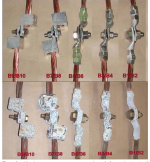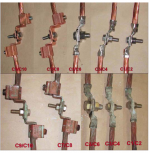- Location
- Lockport, IL
- Occupation
- Semi-Retired Electrical Engineer
I am seeking opinions, and if available, a history lesson, on the early downsides of AL conductors.
The electrical group at a military base is opposing the use of AL in all circumstances, despite the fact that the Unified Federal Criteria (UFCs) specifically allows it in specific circumstances. Here is their most recent set of reasons for forbidding AL:
- - - - - - - - - - - - - - - - - - - - - - - - - -
I agree the initial cost of aluminum can be lower than copper but in the long run copper is always better.
(Here I omit their discussion of copper conductors.)
Aluminum Conductors:
Here are my opinions:
The electrical group at a military base is opposing the use of AL in all circumstances, despite the fact that the Unified Federal Criteria (UFCs) specifically allows it in specific circumstances. Here is their most recent set of reasons for forbidding AL:
- - - - - - - - - - - - - - - - - - - - - - - - - -
I agree the initial cost of aluminum can be lower than copper but in the long run copper is always better.
(Here I omit their discussion of copper conductors.)
Aluminum Conductors:
- Initial Cost: Aluminum conductors are generally less expensive than copper conductors, with prices ranging from $0.50 to $3 per pound, depending on the specific alloy and application.
- Installation Cost: Aluminum conductors can be installed using standard tools and techniques, reducing labor costs.
- Operating Cost: Aluminum conductors have a lower conductivity than copper, resulting in higher energy losses and increased operating costs over time.
- Maintenance Cost: Aluminum conductors are more prone to corrosion and require more frequent maintenance than copper conductors.
- End-of-Life Cost: Aluminum conductors can also be recycled, but the process is less established than for copper, making it less valuable at the end of its life cycle.
Here are my opinions:
- Item 1 is likely valid, thought its cost numbers might be out-of-date.
- For Item 2, I don't see a relationship between standard tools and reduction of labor costs (as compared to using the same tools for copper).
- I think item 3 is not valid, as it does not account for the fact that you must use larger AL conductors for the same ampacity.
- Item 4 is what I am questioning. I believe it might have been true decades ago, but not with the aluminum alloys in use today.
- I know nothing about recycle values. But I don't think they should come into the discussion for designs i9ntended to last 40+ YEARS.



